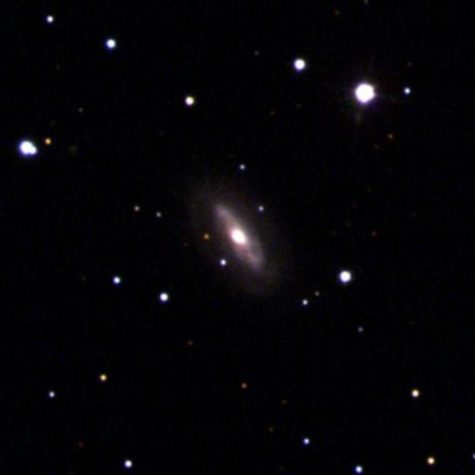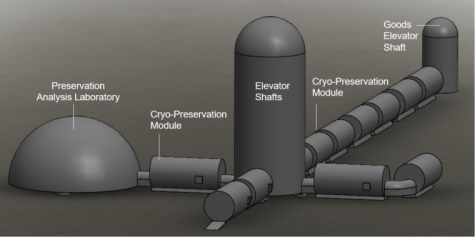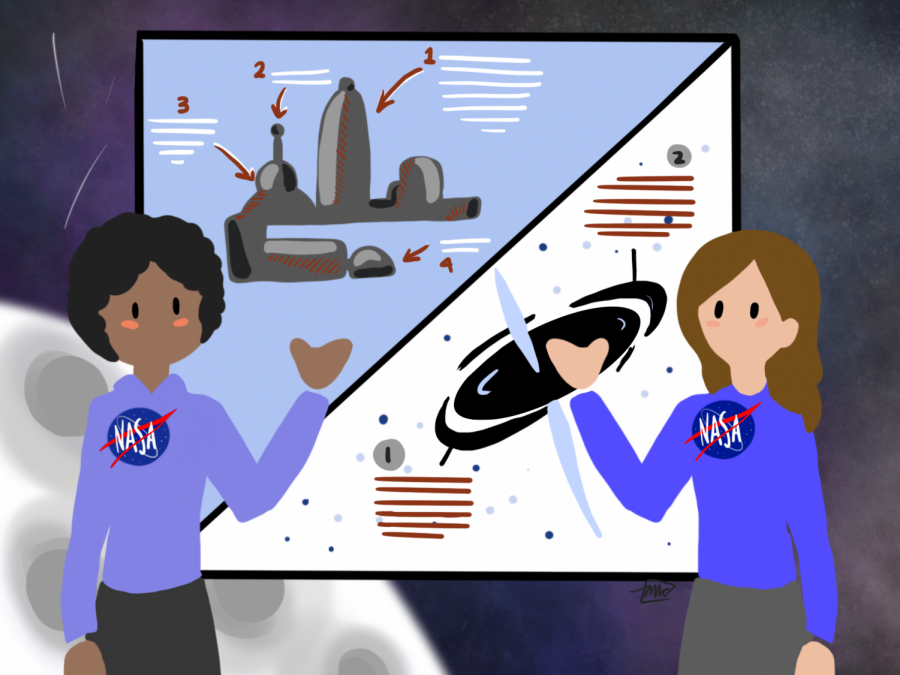Space, at its core, is a constantly changing and expanding vacuum. It is filled with an enormous array of celestial bodies and, as of 1957, human-made ships and satellites.
The National Aeronautics and Space Administration (NASA), an independent federal agency focused on space research and exploration, plays a prominent role in the never-ending stream of discoveries.
Since its foundation in 1958 by President Dwight D. Eisenhower, NASA has captured incredible images of the universe, sent out countless voyagers and space crafts, and shot over 500 people into outer space.
And most recently, between March 7 and March 22, NASA astronauts and researchers have made several extraordinary breakthroughs. Among these were the sighting of a supermassive moving black hole and the proposal to create a facility on the moon.
Discovery of a Massive Moving Black Hole

On Tuesday, March 16, a wandering black hole was spotted 230 million light-years away at the center of a galaxy known as J0437+2456. A highly unusual phenomenon, this specific black hole has a mass of 3 million suns and is the first drifting black hole ever located.
This specific black hole is only one among dozens that researchers and astronomers are currently studying.
“A black hole is a region of space where gravity has become so strong that it bends the fabric of space-time to such an extent that not even light can escape. Large dying stars can form black holes when they supernova, crushing the core of the star into a singularity,” said Ian Hagmann, a physics teacher at Carlmont.
Interestingly, this discovery also confirmed a theory debated by NASA scientists. The theory is largely centered around the possibility of a black hole traveling through space rather than maintaining a stationary residence at the center of their galaxy.
Finally, with enough evidence to support this hypothesis, scientists recently published a new study concerning this supermassive black hole in The Astrophysical Journal.
According to The Centre for Astrophysics | Harvard & Smithsonian, the primary way of identifying a moving supermassive blackhole is by comparing its velocity to that of a neighboring galaxy. By studying black holes with water particles in their accretion disks — which consist of the material that is drawn into the hole — scientists can track the radio light signature created by the water particles.
This laser-like beam, or maser, can then be used by scientists to determine the velocity and gravitational fields of the black holes.
“As modern physicists attempt to explain the theory of gravity more completely, black holes [can become] incredibly important. They can potentially show what happens when gravity becomes very strong,” Hagmann said.
Possible Creation of a DNA Storage Facility on the Moon
Scientists at the University of Arizona made a shocking proposal on March 7. Their plan was to build a “lunar ark” within the lava tubes of the moon that will hold a DNA sample from all 6.7 million species on Earth.
This idea was first introduced at the IEEE Aerospace Conference, which was held virtually this year in response to the COVID-19 health restrictions.
The project’s main motive is to create a safe center off-world, protected from dangers on Earth.
“While the samples are on the moon, they would be protected from events on Earth. In the case of a nuclear war, the samples would not be affected by bomb detonations or nuclear fallout. Effectively, putting the samples on the moon protects them from humanity,” Hagmann said.

Jekan Thanga, head of the Space and Terrestrial Robotic Exploration (SpaceTREx) Laboratory at the University of Arizona, shares similar views with Hagmann. According to Thanga, having the samples kept in a facility on the moon could allow for the chance of “hitting a reset button” if the need ever arose.
He is also optimistic that the project could be done relatively quickly, with researchers estimating 30 years of work and 250 rocket launches.
“This is a project that would require real urgency to have a lot of people energized enough to go after it,” Thanga said. “I think it could be achieved within 10 to 15 years if needed.”
When proposing the project, Thanga emphasized that “There’s this strong interconnectedness between us and nature. We have a responsibility to be guardians of biodiversity and the means to preserve it.”
Although space breakthroughs are not uncommon, these two significant developments have opened up a new range of opportunities in both the fields of space research and exploration.
As researchers worldwide continue examining the intricacies of outer space, it becomes evident that the more humanity learns about what lies beyond Earth, the more they can understand the creation of life itself.
“Space exploration helps answer the questions that we all have in the back of our minds: Where did we come from? How can something come from nothing? What is our purpose?” said junior Catie O’Connor. “Space exploration, while not answering those questions yet, aims to fill that unknown part of our world.”
This story was originally published on Scot Scoop News on March 22, 2021.































![IN THE SPOTLIGHT: Junior Zalie Mann performs “I Love to Cry at Weddings,” an ensemble piece from the fall musical Sweet Charity, to prospective students during the Fine Arts Showcase on Wednesday, Nov. 8. The showcase is a compilation of performances and demonstrations from each fine arts strand offered at McCallum. This show is put on so that prospective students can see if they are interested in joining an academy or major.
Sweet Charity originally ran the weekends of Sept. 28 and Oct. 8, but made a comeback for the Fine Arts Showcase.
“[Being at the front in the spotlight] is my favorite part of the whole dance, so I was super happy to be on stage performing and smiling at the audience,” Mann said.
Mann performed in both the musical theatre performance and dance excerpt “Ethereal,” a contemporary piece choreographed by the new dance director Terrance Carson, in the showcase. With also being a dance ambassador, Mann got to talk about what MAC dance is, her experience and answer any questions the aspiring arts majors and their parents may have.
Caption by Maya Tackett.](https://bestofsno.com/wp-content/uploads/2024/02/53321803427_47cd17fe70_o-1-1200x800.jpg)
![SPREADING THE JOY: Sophomore Chim Becker poses with sophomores Cozbi Sims and Lou Davidson while manning a table at the Hispanic Heritage treat day during lunch of Sept 28. Becker is a part of the students of color alliance, who put together the activity to raise money for their club.
“It [the stand] was really fun because McCallum has a lot of latino kids,” Becker said. “And I think it was nice that I could share the stuff that I usually just have at home with people who have never tried it before.”
Becker recognizes the importance of celebrating Hispanic heritage at Mac.
“I think its important to celebrate,” Becker said. “Because our culture is awesome and super cool, and everybody should be able to learn about other cultures of the world.”
Caption by JoJo Barnard.](https://bestofsno.com/wp-content/uploads/2024/01/53221601352_4127a81c41_o-1200x675.jpg)






